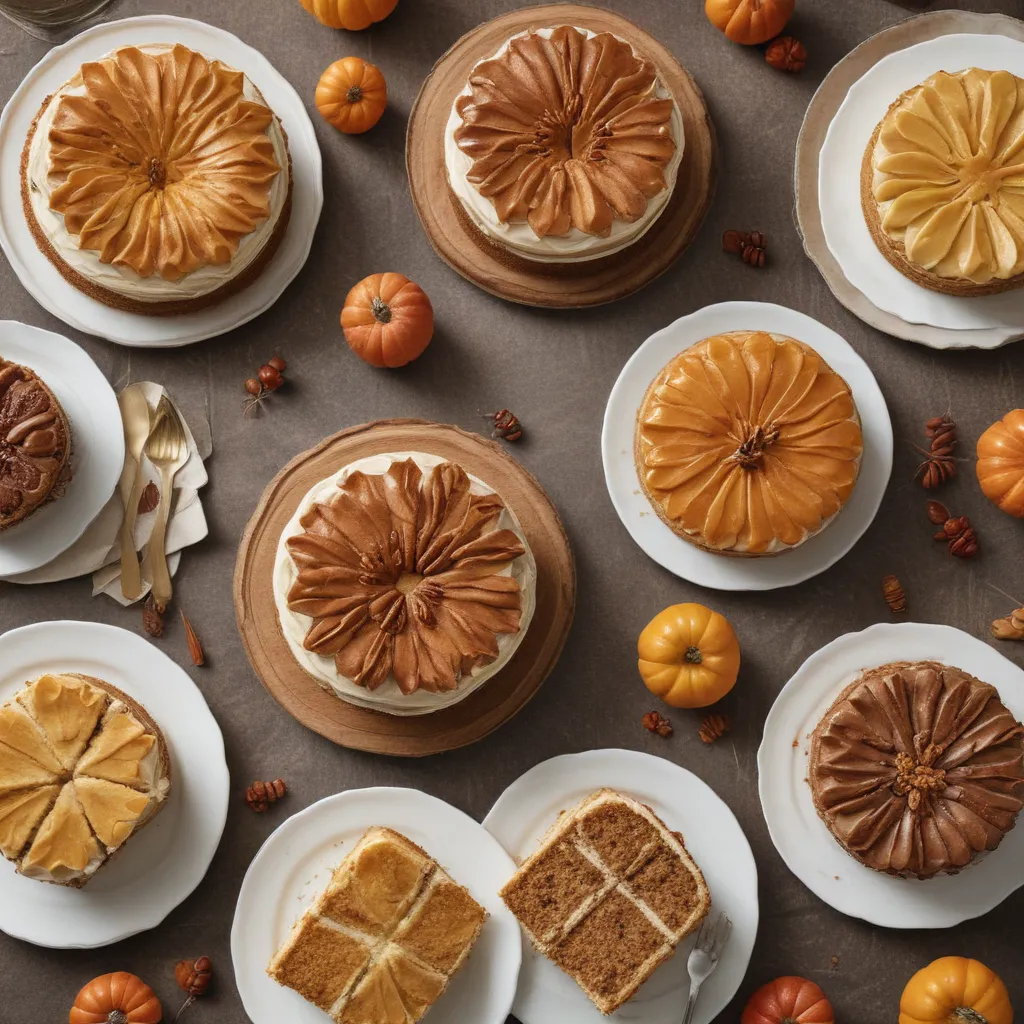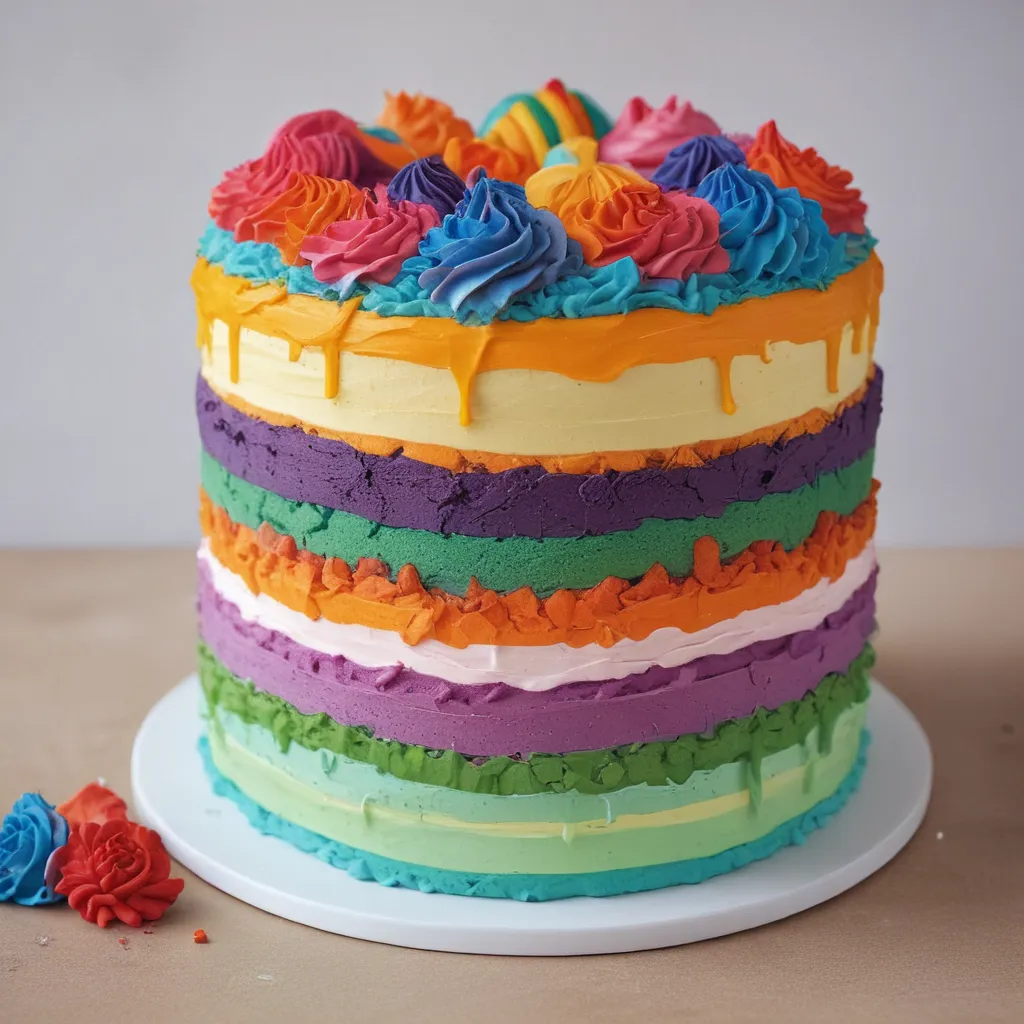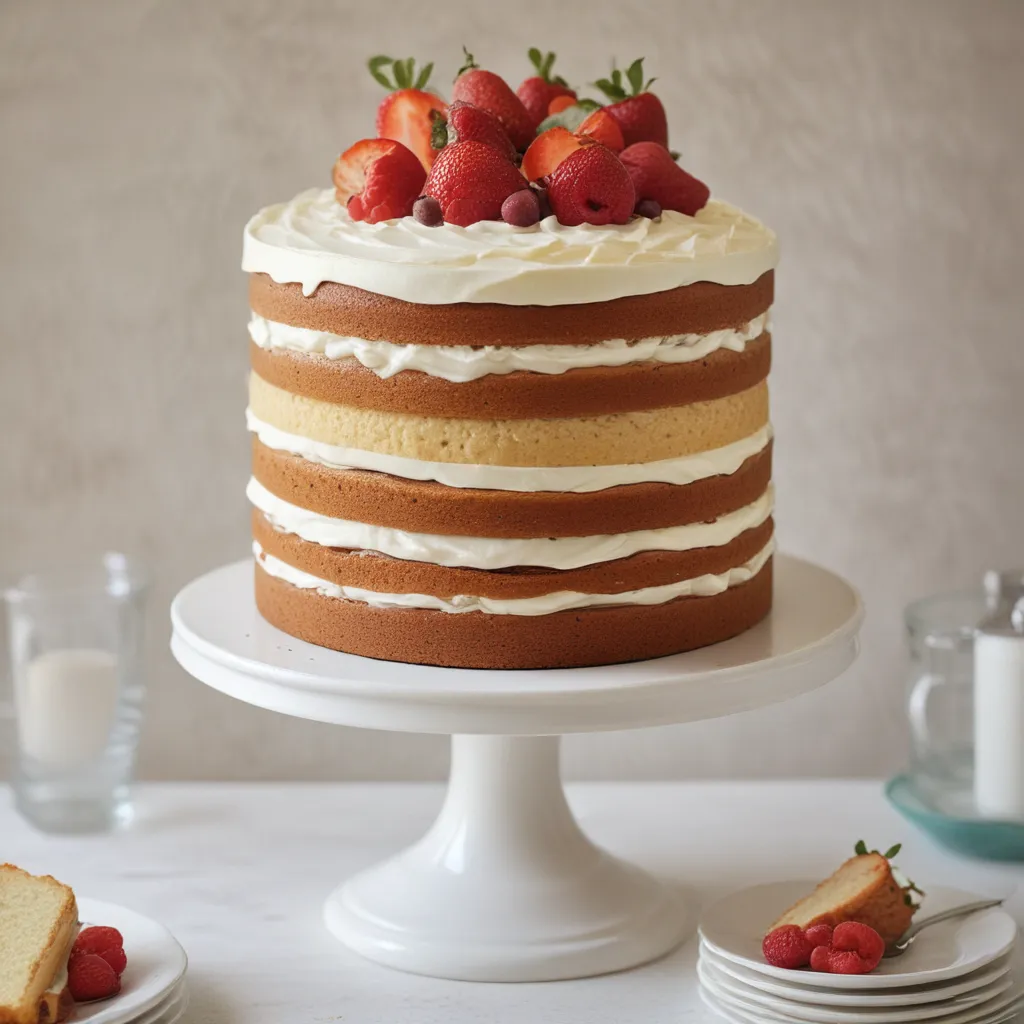Ah, the elusive quest for the perfect cake texture – it’s the holy grail of baking, isn’t it? As the proud owner of Jax Cake Shop here in San Jose, I’ve spent countless hours perfecting the art of creating cakes with the most tantalizing, melt-in-your-mouth texture. And let me tell you, it’s no easy feat!
But fear not, my fellow cake enthusiasts, for I’m here to share my hard-earned wisdom and insights on this deliciously complex topic. Get ready to take a deep dive into the science, techniques, and passion behind crafting cakes with the most irresistible texture imaginable.
The Science of Texture
Let’s start by exploring the fundamental elements that contribute to that oh-so-satisfying mouthfeel. At its core, the texture of a cake is a delicate balance between a multitude of factors – from the type of flour and fat used, to the mixing method, baking temperature, and even the cooling process.
It’s like a symphony, where each ingredient and step plays a crucial role in creating the perfect harmonious experience. Picture it this way: the flour provides the sturdy foundation, the fats and liquids act as the binding agents, the leavening agents are the musicians that bring the volume, and the mixing and baking are the conductor’s baton, guiding the entire performance.
Now, let’s dive a little deeper into the specific components that make up this textural masterpiece. The type of flour you use can have a significant impact on the overall crumb and mouthfeel of your cake. All-purpose flour, for example, tends to create a more tender, delicate texture, while cake flour can lend a softer, more velvety feel. And don’t even get me started on the differences between bleached and unbleached flour – it’s a rabbit hole I could spend hours exploring!
Moving on, the role of fats and liquids is absolutely crucial. The right balance of butter, oil, eggs, and milk can mean the difference between a dense, heavy cake and one that’s light, airy, and positively ethereal. It’s all about finding that sweet spot where the fats and liquids work together to create the perfect tender, moist crumb.
And what about leavening agents? Ah, the unsung heroes of the cake world. Whether it’s baking soda, baking powder, or even whipped egg whites, these little guys are responsible for giving your cake that irresistible rise and pillowy soft texture. Get the proportions wrong, and you could end up with a dense, tough crumb – or, heaven forbid, a cake that falls flatter than a pancake.
Mastering the Mixing Method
Alright, now that we’ve covered the fundamental building blocks, let’s talk about the art of mixing. Because, my friends, the way you combine and incorporate those ingredients can make all the difference in the world.
Take the classic creaming method, for instance. By starting with room-temperature butter and sugar and whipping them together until light and fluffy, you’re creating tiny air pockets that will expand during baking, resulting in a wonderfully tender, moist cake. But if you rush this step or use cold butter, you’ll end up with a dense, heavy texture that’s just not as satisfying.
And don’t even get me started on the dreaded overmixing. Overwork that batter, and you’ll end up with a tough, rubbery crumb that’s about as appealing as a hockey puck. It’s all about finding that perfect balance, where the ingredients are just combined enough to create a smooth, cohesive batter without overdeveloping the gluten.
Ah, but the mixing method is just the beginning. The temperature at which you bake your cake can have a dramatic effect on the final texture as well. Too low, and you’ll end up with a gummy, undercooked mess. Too high, and you risk a dry, tough exterior with a dense, heavy interior. It’s all about finding that Goldilocks zone – the temperature that’s just right to create a perfectly light, airy, and moist crumb.
Texture Transformation: From Oven to Table
Now, let’s talk about the all-important cooling and finishing touches. Because, trust me, even the most perfectly baked cake can be ruined if you don’t handle the post-baking process with the utmost care.
The way you cool your cake can make or break the texture. If you try to rush it and pop that still-warm cake out of the pan, you’re asking for trouble. The delicate structure will collapse, and you’ll end up with a dry, crumbly mess. Instead, I recommend letting your cakes cool completely in the pan before even thinking about removing them. This gentle, gradual cooling process helps to set the structure and lock in that moist, tender crumb.
And what about the frosting or glaze? The type and application of your topping can also have a significant impact on the overall texture. A thick, heavy buttercream can weigh down a delicate cake, while a light, airy whipped cream can actually enhance the moist, fluffy texture. And don’t even get me started on the texture-transforming powers of a shiny mirror glaze or a crisp, crackly sugar crust.
It’s all about finding the perfect balance, my friends. The interplay between the cake’s interior and exterior, the contrast of soft and crunchy, the harmonious blend of flavors and textures – that’s where the magic happens. And let me tell you, when you nail it, it’s a textural symphony that will leave your taste buds singing.
Texture Triumphs: Real-Life Examples
Now, I know all this talk about the science and technique behind cake texture can get a bit, well, technical. But let me assure you, the payoff is more than worth it. I’ve seen firsthand the pure delight and excitement on my customers’ faces when they sink their teeth into one of our creations and experience that perfect balance of moist, tender crumb and delightful, satisfying texture.
Take, for instance, the time we created a custom birthday cake for a little girl who had her heart set on a unicorn-themed masterpiece. We started with a fluffy, light-as-air vanilla cake, infused with just a hint of fragrant rose water to add an enchanting floral note. The interior was a vision of pastel perfection, with a soft, pillowy crumb that practically melted on the tongue.
But the real showstopper was the frosting. Instead of going for a dense, heavy buttercream, we opted for a dreamy, cloud-like whipped cream that complemented the cake’s delicate texture beautifully. And to top it all off, we added a shimmering mirror glaze that provided a delightful contrast of smooth, glossy exterior and that melt-in-your-mouth goodness within.
The end result? A cake that was not only a feast for the eyes, but a true textural delight. The birthday girl and her entire family were absolutely enamored, declaring it the best cake they’d ever tasted. Needless to say, that was a moment of pure triumph for our team – proof positive that when it comes to cake, texture is the true star of the show.
Texture Transformations: A Cake Journey
And you know, that’s just the tip of the iceberg when it comes to the transformative power of texture. I’ve seen cakes go from dense and heavy to light and airy, from dry and crumbly to moist and tender, all with a few simple tweaks to the recipe and technique.
Take, for example, the time a customer came to us with a family recipe for a classic pound cake that just wasn’t quite hitting the mark. The texture was dense and tough, with a dry, unforgiving crumb that left everyone longing for something more. But with a little experimentation and a deep dive into the science of cake baking, we were able to work our textural magic.
First, we adjusted the flour-to-fat ratio, adding a touch more butter and a bit less all-purpose flour to create a richer, more tender crumb. Then, we played around with the mixing method, carefully creaming the butter and sugar to incorporate more air into the batter. Finally, we tweaked the baking time and temperature to ensure the cake cooked through without drying out.
The result? A pound cake that was still dense and satisfying, but with a melt-in-your-mouth texture that had our customer raving. They couldn’t believe the transformation, and neither could we. It was a textural triumph, proof that with a little care and attention, even the most stubborn cakes can be coaxed into textural perfection.
Texture Triumphs: A Cake for the Ages
And you know, that’s the real joy of working in the world of custom cakes – the opportunity to take someone’s vision and turn it into a textural masterpiece. Whether it’s a simple, classic vanilla cake or a towering, elaborately decorated showstopper, the pursuit of that perfect texture is what drives me every single day.
Take, for instance, the time we were tasked with creating a wedding cake for a couple who were truly cake aficionados. They wanted a cake that would not only be visually stunning, but one that would leave their guests in awe of its texture and flavor. No pressure, right?
But you know what they say – when the going gets tough, the tough get baking. We started with a rich, moist chocolate cake as the foundation, infusing it with a touch of espresso to amplify the decadence. Then, we layered in a silky smooth chocolate ganache, followed by a light and airy Italian meringue buttercream that provided the perfect contrast of textures.
To top it all off, we adorned the cake with delicate, handcrafted sugar flowers that added a touch of elegance and whimsy. And when the big day arrived, the couple and their guests were absolutely smitten. They raved about the cake’s impeccable texture, with one guest even going so far as to describe it as “a symphony of flavors and sensations in every bite.”
That, my friends, is what it’s all about – creating cakes that not only look stunning, but that deliver an unforgettable textural experience. It’s the kind of triumph that keeps me coming back to the kitchen, day after day, in pursuit of that ultimate textural nirvana. And trust me, I’m not stopping anytime soon.
Texture Takeaways: Putting it All Together
So, there you have it, my fellow cake enthusiasts – the ins and outs of understanding and improving cake texture. From the science behind the ingredients to the art of mixing and baking, it’s a complex and fascinating world that I’m positively enamored with.
But you know, at the end of the day, it all comes down to one simple truth: texture is the key to creating cakes that are not only visually stunning, but that deliver a truly unforgettable sensory experience. It’s the difference between a cake that’s merely good and one that’s absolutely transcendent.
So, the next time you’re whipping up a batch of your favorite cake, take a moment to really focus on that texture. Experiment with different flours, fats, and mixing methods. Play around with baking temperatures and cooling techniques. And most importantly, have fun with it! Because when you nail that perfect balance of moist, tender crumb and delightful, satisfying mouthfeel, you’ll know it. And trust me, your taste buds will thank you.
Now, if you’ll excuse me, I’ve got a custom cake order to attend to. One that’s going to blow our customer’s mind with its textural perfection. Wish me luck, and happy baking, my friends!





